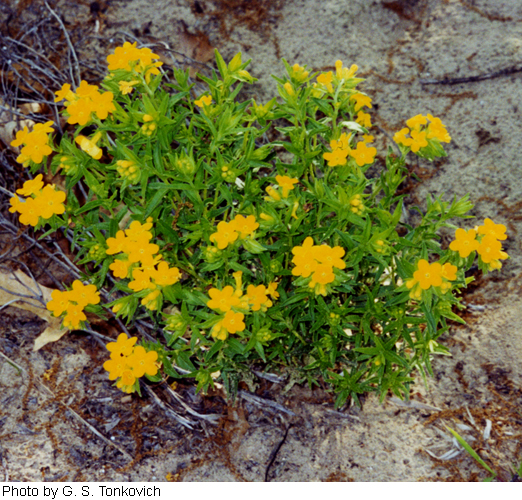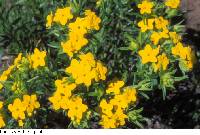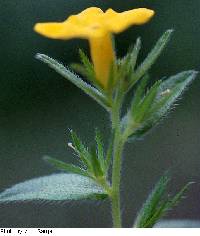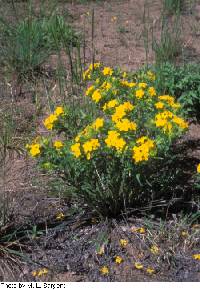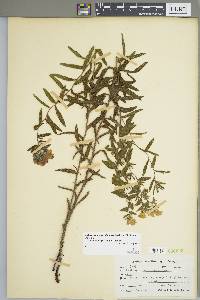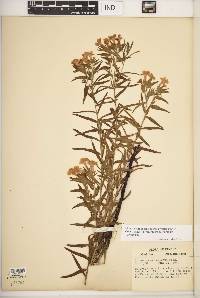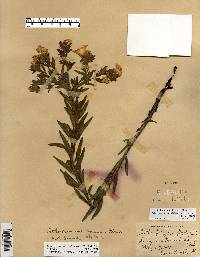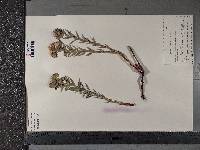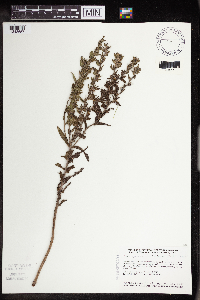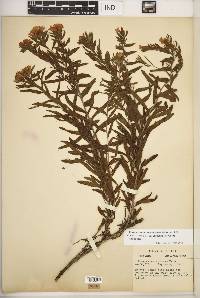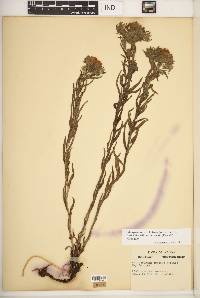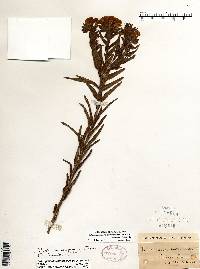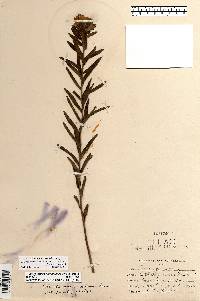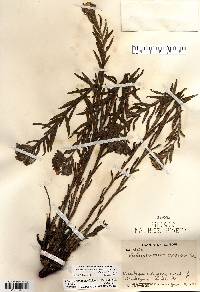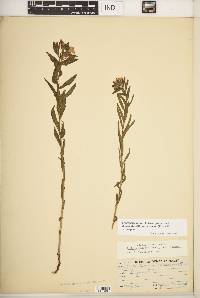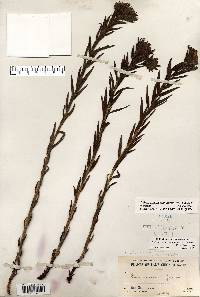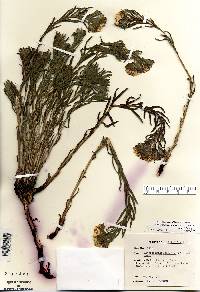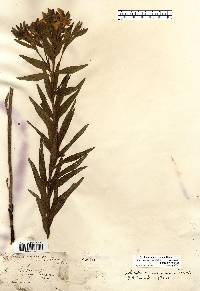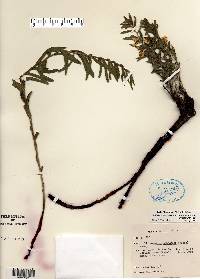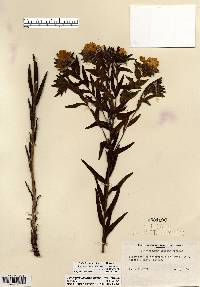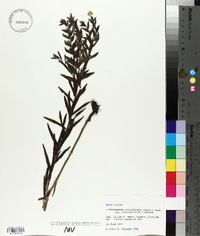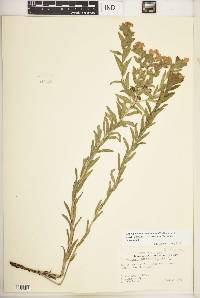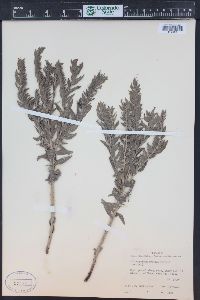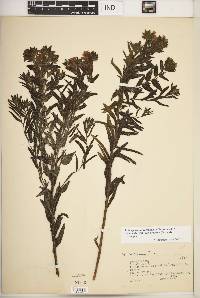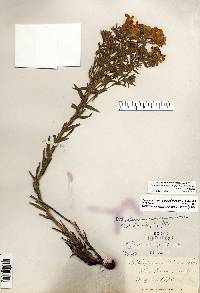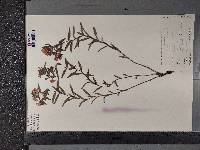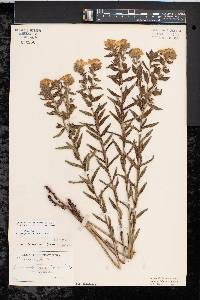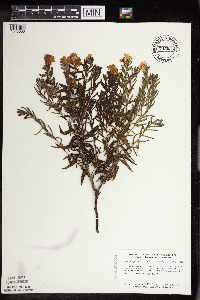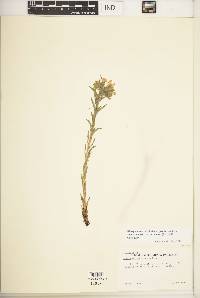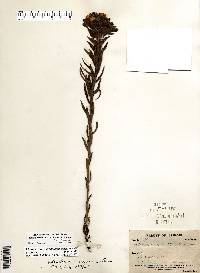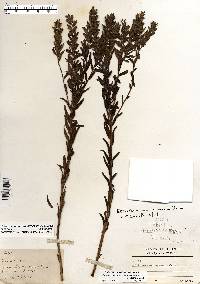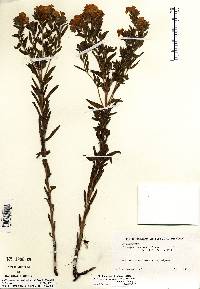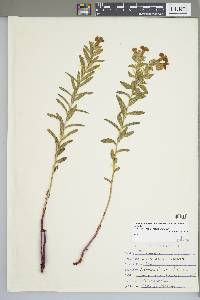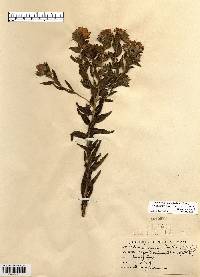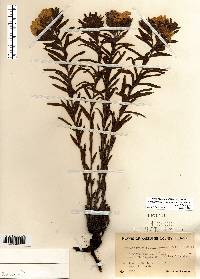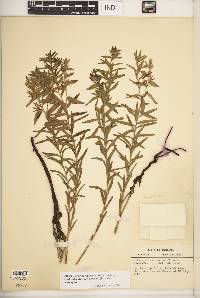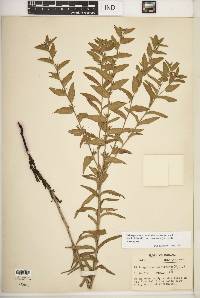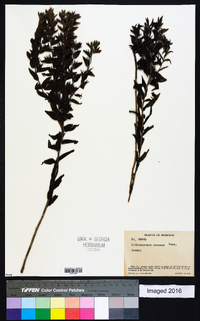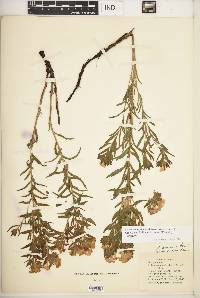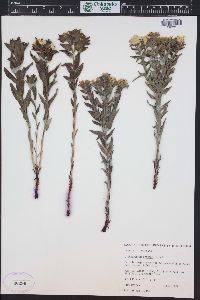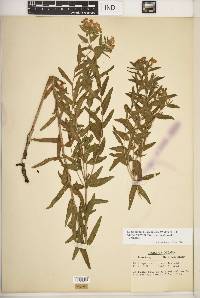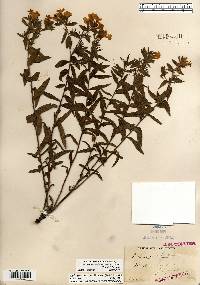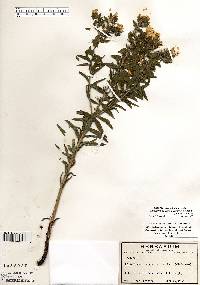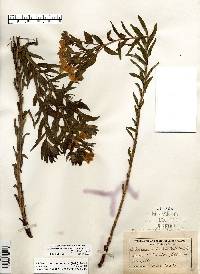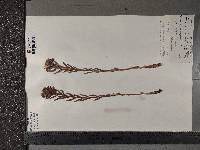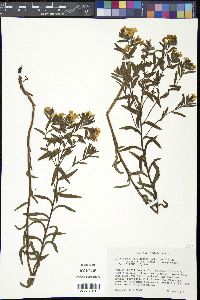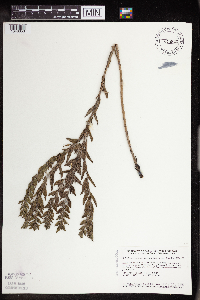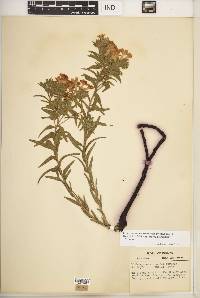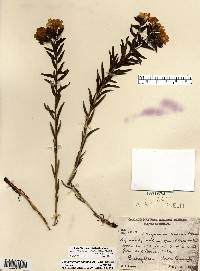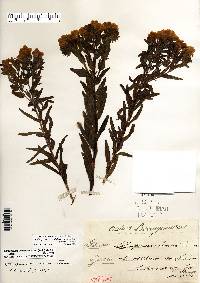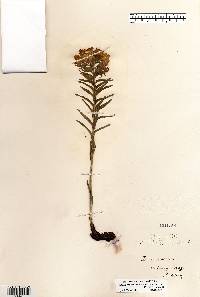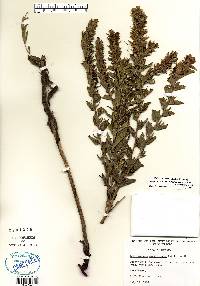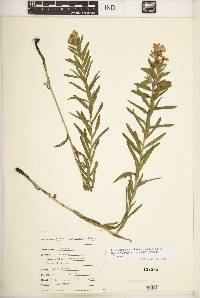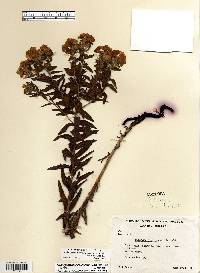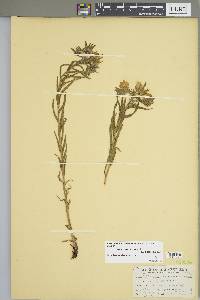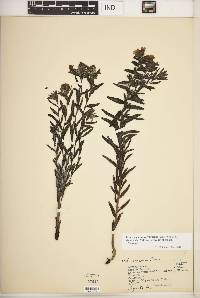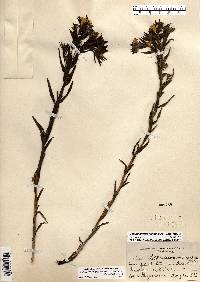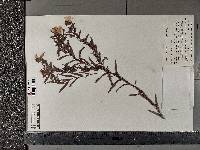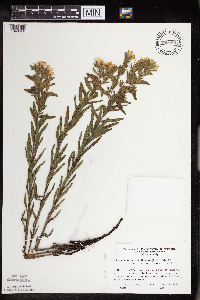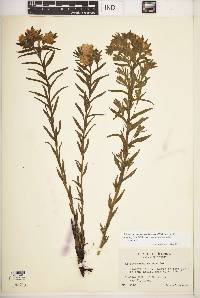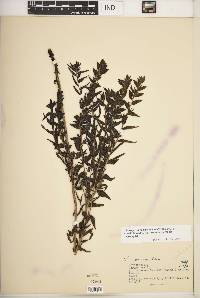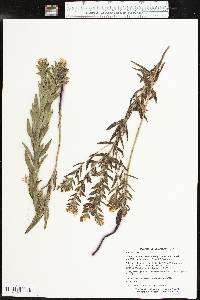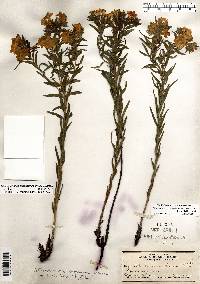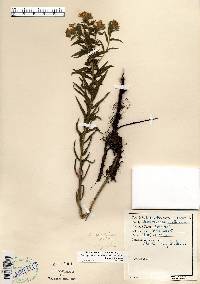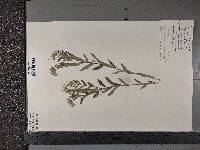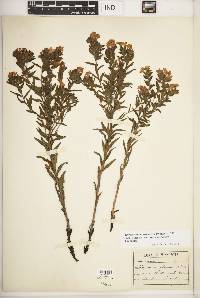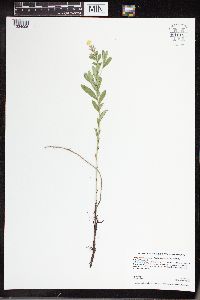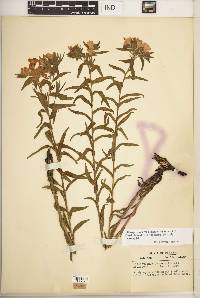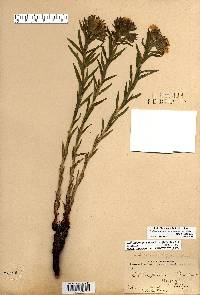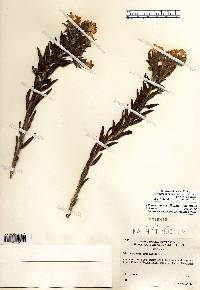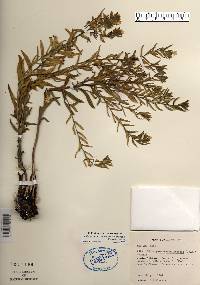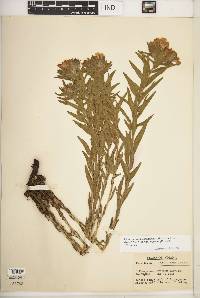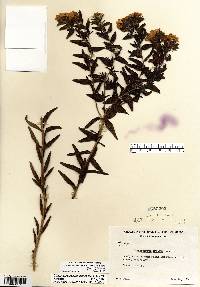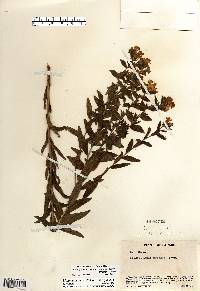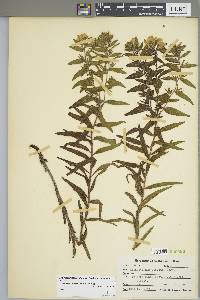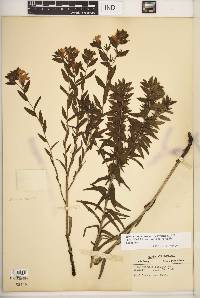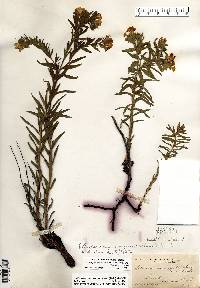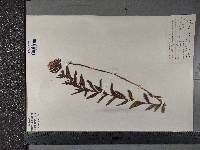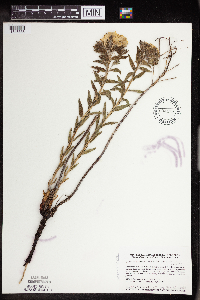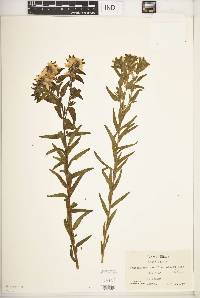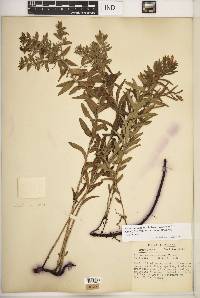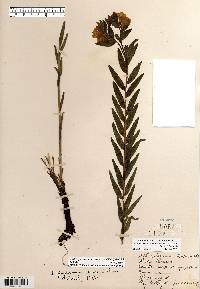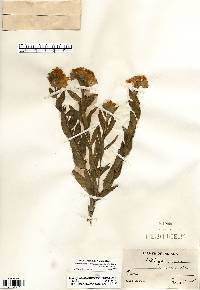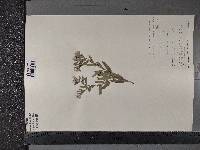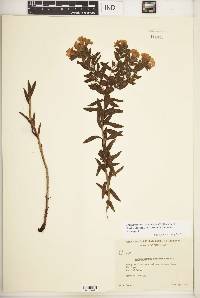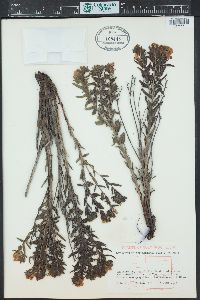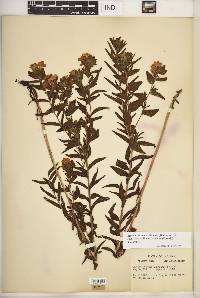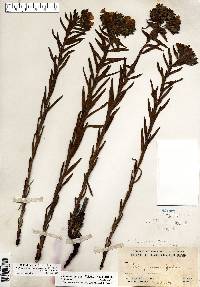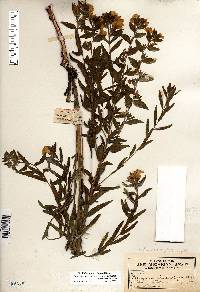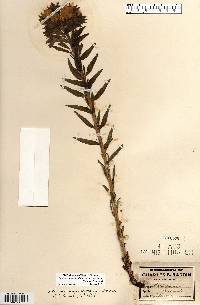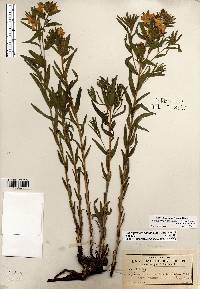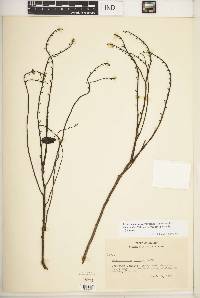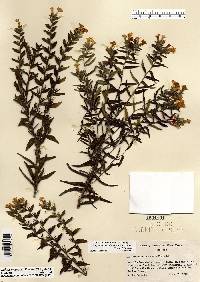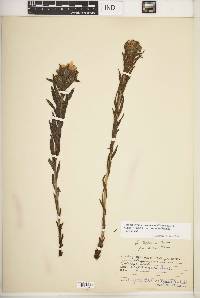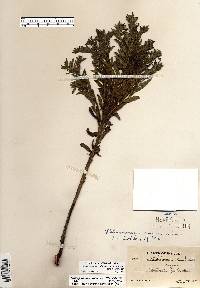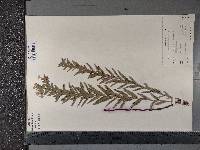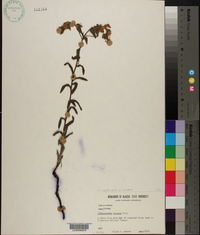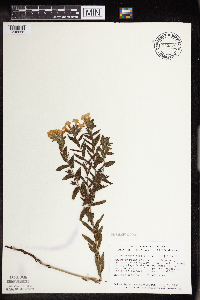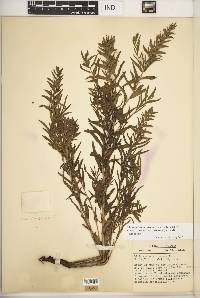
|
|
|
|
Family: Boraginaceae
Carolina puccoon
|
Perennial herb 30 - 60 cm tall Leaves: many, usually more than 30 below the inflorescence, alternate, stalkless, non-toothed, firm, without obvious lateral veins, 3 - 6 cm long, over 5 mm wide, linear to lance-shaped, and covered with rough, stiff, very swollen-based hairs (pustulate). Inflorescence: several, terminal or subterminal, densely-flowered, leafy-bracted, short-branched clusters with short-stalked, bright yellow flowers subtended by overlapping, lance- to egg-shaped, rough bracts covered with stiff, swollen-based hairs (pustulate). At first the inflorescence is dense and compact, but then it becomes more open and elongates up to 1 0 - 15 cm long when in fruit. Flowers: bright orange-yellow, 1.5 - 2.5 cm broad, funnel-shaped with 0.7 - 1.4 cm long narrow tube and broad, flaring lobes. Sepals: five, slightly shorter than petal tube, 0.6 - 1.1 cm long (elongating to 1 - 1.5 cm in fruit), very narrow, longer than wide, linear, with a lengthwise ridge (keel) running up the outside, and covered with rough, stiff, obviously swollen-based hairs (pustulate). Petals: five, but fused for over half their length into a 0.7 - 1.4 cm long, internally hairy (at base) tube, then separating into five, flaring to spreading, 0.7 - 0.9 cm long, fairly oblong to narrowly rounded lobes with blunt tips. Stamens: five, attached to inside of petal tube, but the oblong anthers not extending past the petal tube. Flowers on different plants can have the stamens attached at two different heights depending on the length of the style and position of the stigma: stamens attached low in the petal tube and below the stigma (long-styled) are called short; and stamens attached near the top of the petal tube and above the stigma (short-styled) are called long. Pistil: with one, deeply four-lobed, superior ovary; one, slender style; and one, distinctly two-lobed stigma. The styles of all flowers on a single plant can be either short or long (never mixed on a single plant), but neither type extends past the petal tube. Fruit: a cluster of one to four, erect, shiny, lustrous, ivory-white, hard, bony, smooth, non-pitted, 3.5 - 4.5 mm tall, egg-shaped nutlets with pointed tips, and rounded base with a central, constricted, collar-like rim. The nutlet clusters are surrounded by the erect to ascending, persistent, 1 - 1.5 cm long, evidently keeled, rough-hairy sepals. Root: a stout, very long, woody taproot, which if broken or cut exudes a deep purple-red dye. Stems: several (often twelve or more), clustered, erect, sometimes branched above, bristly fuzzy with spreading, often 1 mm long, stiff hairs with obvious swollen or inflated bases (pustulate). Similar species: Lithospermum caroliniense var. croceum is most similar to L. canescens, but that species is more softly silky-hairy, there are usually only up to 25 leaves below the inflorescence, the sepals are shorter (typically under 6 mm), the petal lobes are a bit smaller (5 - 6 mm long), and the nutlets are shorter (up to 3 mm). The typical variety of L. caroliniense can be very hard to discern from this variety. However, the main distinguishing characters are supposed to be that it has fewer leaves (up to 25 below inflorescence), the hairs of the plant should not have as obviously swollen bases (or at least not all of them), and the sepals should rarely have keels. Flowering: April to October Habitat and ecology: Common in dry sandy soils, especially along dunes or in black oak savannas. Occurence in the Chicago region: native Notes: This taxon has been interpreted in several different ways in the eastern United States. Sometimes the entity that exists along the Atlantic coastal plain is considered the only true L. caroliniense in the narrowest sense. In that case, the plants in the rest of the country, including those of the Chicago Region, are considered a separate species, L. croceum. The two species have been said to be distinguishable by the presence of a ridge or keel along the sepals of L. croceum, swollen bases on the hairs of L. croceum, and the presence of only about 25 leaves below the inflorescence in L. caroliniense. There are questions as to whether these characters are truly distinguishing or overlapping, or if there is a spatial separation in their ranges (see Johnston 1952, and Cusick 1985). There has been much debate, and most authorities no longer separate the two entities at the species level, but include L. croceum as a subspecies or variety of L. caroliniense (L. caroliniense ssp. croceum or L. caroliniense var. croceum). Author: The Field Museum From Flora of Indiana (1940) by Charles C. Deam Infrequent throughout the sandy area of the lake region. There are reports from southern Indiana but this and the preceding species have always been confused and I believe that most of the southern reports should be referred to Lithospermum canescens. Usually in very sandy soil in open black oak woods, along roadsides and railroads, and in sandy prairie habitats. .…… Indiana Coefficient of Conservatism: C = 8 Wetland Indicator Status: N/A |
|
|
|

